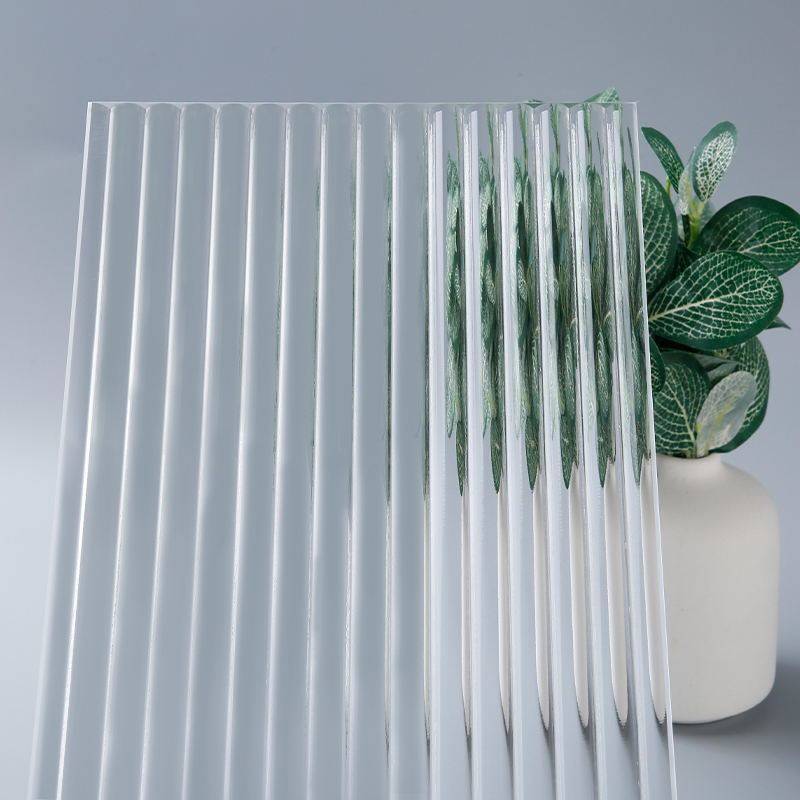The Process of Making Toughened Glass
Toughened glass, also known as tempered glass, is a type of safety glass that has been treated to be stronger and more resistant to impact than regular glass. The process of making toughened glass is intricate and involves several steps that transform ordinary glass into a product that meets stringent safety and durability standards. This article delves into the detailed stages involved in the production of toughened glass.
The journey begins with the selection of raw materials. Typically, silica sand, soda ash, and limestone are the primary components used to manufacture glass. These materials are combined in a specific ratio and heated in a furnace at temperatures ranging from 1,500 to 1,600 degrees Celsius (about 2,732 to 2,912 degrees Fahrenheit). This heating process is essential for melting the raw materials down to a molten state, forming what will eventually become the glass sheet.
Once the glass has reached a molten state, it is carefully poured onto a flat surface or drawn into sheets using a float process, which involves floating the molten glass on molten tin. This technique produces flat, uniform sheets of glass that are essential for subsequent toughening processes. The thickness and dimensions of the sheets can be adjusted according to specific requirements, making this an agile step in the manufacturing process.
After cooling and solidifying, the glass sheets undergo a quality check to identify any defects or imperfections. This step is critical, as any flaws in the glass can compromise the integrity of the final product. Once quality control is passed, the glass sheets are cut to the desired sizes using precision cutting techniques. This is followed by grinding and polishing the edges, which is essential to ensure that the edges are smooth and free from chips or cracks, as these flaws can be sites of weakness once the glass is toughened.
process of making toughened glass
The actual toughening process begins with the heating of the glass sheets in an oven known as a tempering furnace. The sheets are uniformly heated to a temperature of around 600 to 700 degrees Celsius (1,112 to 1,292 degrees Fahrenheit). This phase is crucial, as the heat prepares the glass for rapid cooling. Once the glass reaches the target temperature, it is then subjected to a quick cooling process known as quenching, where cool air is blown onto the glass surfaces. This rapid cooling causes the outer surfaces of the glass to cool and solidify faster than the inner layers, creating compressive stresses on the surface and tensile stresses on the inside.
The result of this process is a glass that is not only much stronger than regular glass but also shatters into small, blunt pieces when broken, thereby reducing the risk of injury. This property of toughened glass makes it ideal for a variety of applications, including windows, doors, shower screens, and even automotive glass.
Once toughening is complete, the glass goes through another round of quality inspection to ensure that it meets industry standards for strength and safety. Any sheets that do not pass inspection are discarded, thus maintaining high standards for the final product.
Toughened glass is also designed to withstand thermal stresses, making it suitable for environments with significant temperature fluctuations. This added strength and safety attribute has led to its widespread adoption in modern architecture and design, where both aesthetics and safety are paramount.
In conclusion, the process of making toughened glass is a sophisticated blend of science and art, involving the careful selection of materials, precise control of temperature, and rigorous quality checks. From the initial melting of raw materials to the final inspection of tempered sheets, every step is meticulously executed to ensure that the finished product meets the high standards expected in today’s market. This glass not only enhances the safety of buildings and vehicles but also plays a significant role in contemporary design, reinforcing the notion that form and function can indeed coexist in harmony.
 Afrikaans
Afrikaans  Albanian
Albanian  Amharic
Amharic  Arabic
Arabic  Armenian
Armenian  Azerbaijani
Azerbaijani  Basque
Basque  Belarusian
Belarusian  Bengali
Bengali  Bosnian
Bosnian  Bulgarian
Bulgarian  Catalan
Catalan  Cebuano
Cebuano  Corsican
Corsican  Croatian
Croatian  Czech
Czech  Danish
Danish  Dutch
Dutch  English
English  Esperanto
Esperanto  Estonian
Estonian  Finnish
Finnish  French
French  Frisian
Frisian  Galician
Galician  Georgian
Georgian  German
German  Greek
Greek  Gujarati
Gujarati  Haitian Creole
Haitian Creole  hausa
hausa  hawaiian
hawaiian  Hebrew
Hebrew  Hindi
Hindi  Miao
Miao  Hungarian
Hungarian  Icelandic
Icelandic  igbo
igbo  Indonesian
Indonesian  irish
irish  Italian
Italian  Japanese
Japanese  Javanese
Javanese  Kannada
Kannada  kazakh
kazakh  Khmer
Khmer  Rwandese
Rwandese  Korean
Korean  Kurdish
Kurdish  Kyrgyz
Kyrgyz  Lao
Lao  Latin
Latin  Latvian
Latvian  Lithuanian
Lithuanian  Luxembourgish
Luxembourgish  Macedonian
Macedonian  Malgashi
Malgashi  Malay
Malay  Malayalam
Malayalam  Maltese
Maltese  Maori
Maori  Marathi
Marathi  Mongolian
Mongolian  Myanmar
Myanmar  Nepali
Nepali  Norwegian
Norwegian  Norwegian
Norwegian  Occitan
Occitan  Pashto
Pashto  Persian
Persian  Polish
Polish  Portuguese
Portuguese  Punjabi
Punjabi  Romanian
Romanian  Russian
Russian  Samoan
Samoan  Scottish Gaelic
Scottish Gaelic  Serbian
Serbian  Sesotho
Sesotho  Shona
Shona  Sindhi
Sindhi  Sinhala
Sinhala  Slovak
Slovak  Slovenian
Slovenian  Somali
Somali  Spanish
Spanish  Sundanese
Sundanese  Swahili
Swahili  Swedish
Swedish  Tagalog
Tagalog  Tajik
Tajik  Tamil
Tamil  Tatar
Tatar  Telugu
Telugu  Thai
Thai  Turkish
Turkish  Turkmen
Turkmen  Ukrainian
Ukrainian  Urdu
Urdu  Uighur
Uighur  Uzbek
Uzbek  Vietnamese
Vietnamese  Welsh
Welsh  Bantu
Bantu  Yiddish
Yiddish  Yoruba
Yoruba  Zulu
Zulu 

